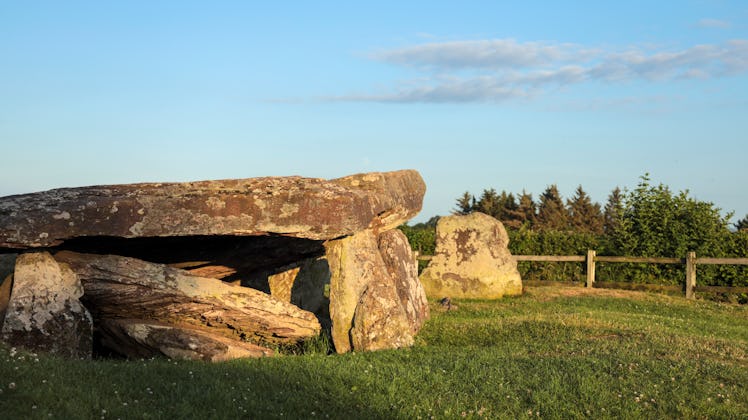A 5,000-Year-Old Tomb Is Being Excavated For The First Time
Archeologists are digging up the Neolithic chambered tomb called Arthur’s Stone.

It's hard to imagine what life on Earth would have been like thousands of years ago, which is why it is so cool when archeologists discover and excavate hints of what life may have looked like back then. One recent exploration has been of the 5,000-year-old tomb called Arthur's Stone, in honor of the mythical ruler of Camelot. The project sounds otherworldly, even though it’s just hidden in the English countryside.
According to CNN, archeologists are digging up the Neolithic chambered tomb called Arthur's Stone for the first time. English Heritage, a charity that preserves historical places in England, has partnered with the University of Manchester to investigate the tomb built during a critical time in Britain's history.
There isn't much known about the tomb other than it appears to mark when pottery and polished stone tools were first used. The ruins are located in Herefordshire near the Welsh border in the West Midlands of England.
Researchers hope the excavations will give more insight into that part of Britain's history where they can learn more about the island's ancient inhabitants. In addition, they believe the timeframe of the site lines up to when other monuments — like Stonehenge — were becoming more common, CNN explains.
"The act of constructing such a massive edifice would undoubtedly have been important, as it would have drawn people together to labor, enhancing social solidarity, and perhaps generating prestige for the person or persons directing the work," Julian Thomas, professor of archaeology at the University of Manchester, who is a lead on the project, told CNN.
The surrounding area was previously excavated and found last year. The team at the time found upright posts that extended south from the monument going down under the hills where the tomb is located. "The monument consists of a large capstone held up by a series of upright stones," CNN explains.
"The chamber is formed of nine upright stones, with an enormous capstone, estimated to weigh more than 25 tones," English Heritage explains. "It was accessed through the side of the covering mound, via the right-angled passage. There is an isolated stone that probably formed part of a false entrance, perhaps providing a visual focus for ceremonies."
The research team believes the tomb was only used for a few generations but says it's not likely it was only built as a tomb. When comparing the tomb to similar examples in the area, researchers assume they'll find human skeletal remains, pottery, and more.
If this type of history is your thing, and you’re looking for some summer adventures, you can book a tour through English Heritage to see the monument and learn more about the partnership's excavation plans.
This article was originally published on